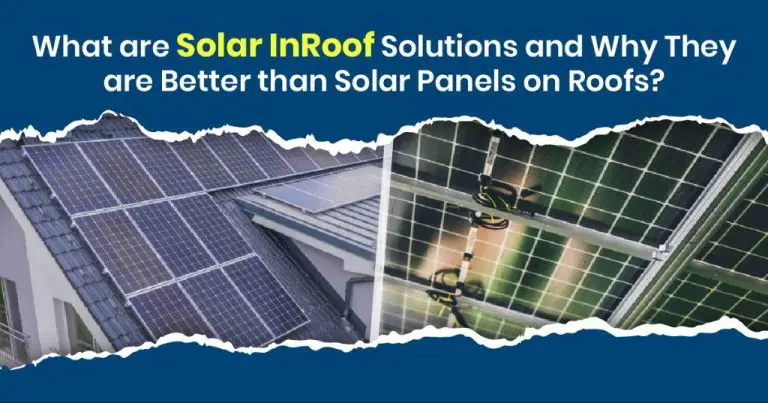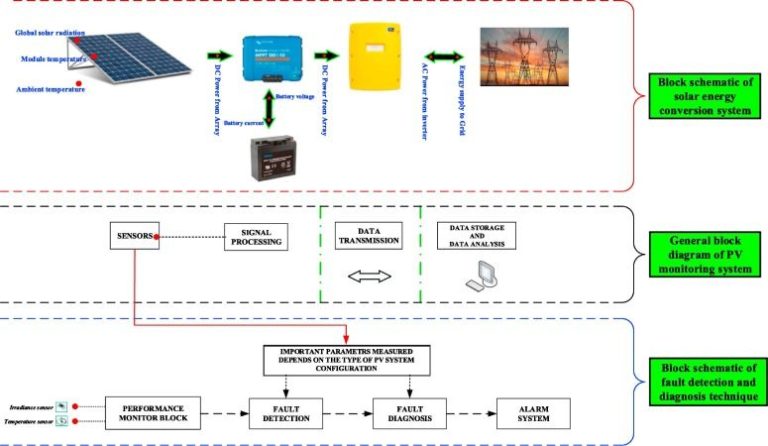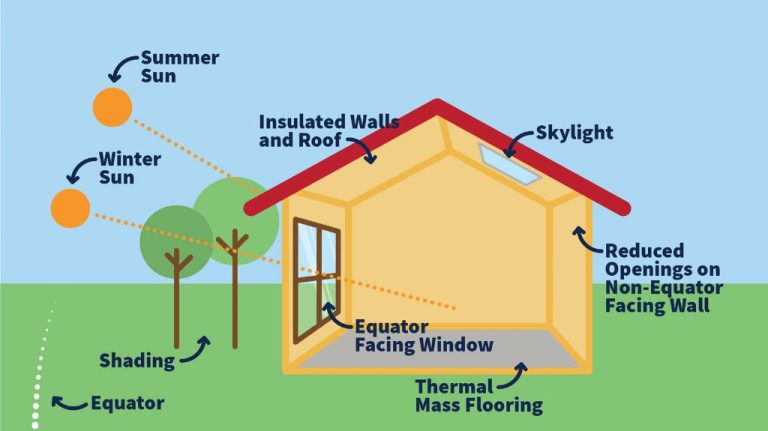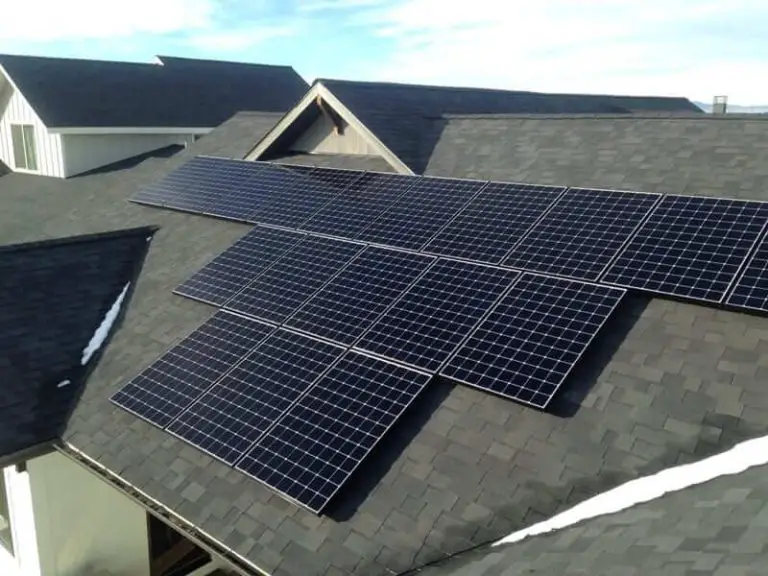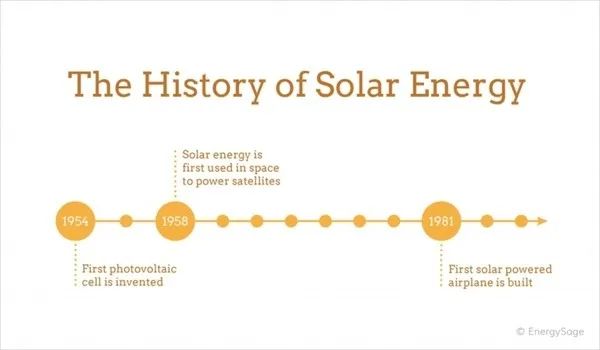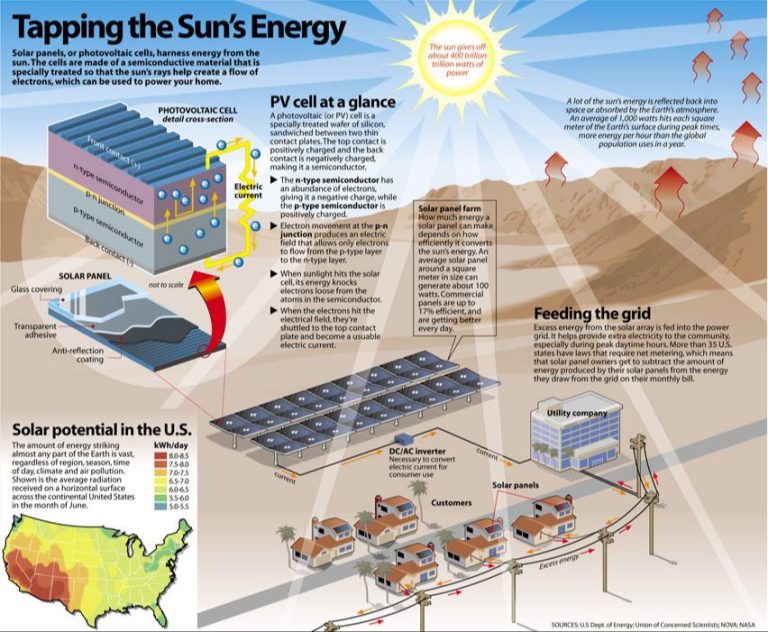How Does Solar Energy Convert To Electrical Energy?
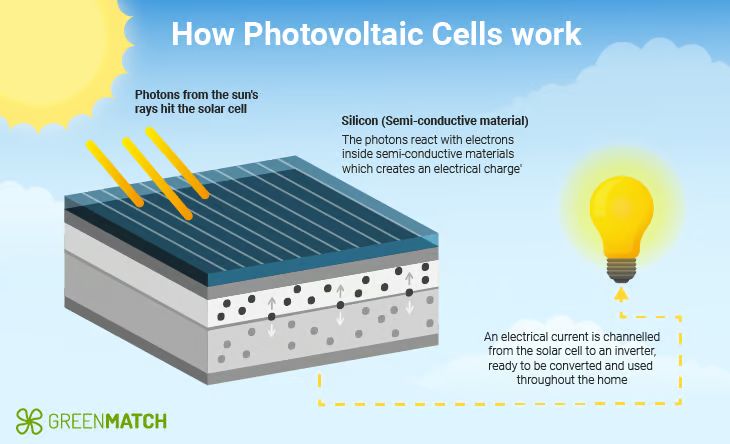
Solar energy is the radiant light and heat from the sun that is harnessed using a range of technologies such as solar heating, photovoltaics, and concentrated solar power. Understanding how solar energy is converted into useful forms like electricity is important as we work to transition away from fossil fuels to cleaner and renewable energy sources. The process of converting sunlight into electricity is known as the photovoltaic effect. This article will provide an overview of how photovoltaic solar cells are able to convert solar energy into direct current electricity.
Solar Cells
Solar cells, also called photovoltaic (PV) cells, are semiconductor devices that convert sunlight directly into electricity. They are made from materials like silicon that exhibit the photovoltaic effect – when sunlight hits the cell, the absorbed photons excite the electrons in the atoms of the cell, causing the electrons to flow as an electric current (1).
Solar cells are manufactured both as monocrystalline and as polycrystalline. In monocrystalline solar cells, the cell is made from a single, continuous crystal of silicon. This provides higher efficiency but costs more to manufacture. Polycrystalline cells are made from many small silicon crystals fused together, which is cheaper but less efficient (1).
During manufacturing, phosphorous and boron are added to silicon to create excess negative electrons (n-type) and positive holes (p-type). The addition of these impurities makes the silicon conductive. When n-type and p-type silicon are placed together, electrons flow from the n-side to the p-side, creating an electric field across the cell – forming a p-n junction (1).
When sunlight enters the cell, its energy frees electrons in the cell’s upper layer. The built-in electric field provides directional force to the free electrons, resulting in an electric current when the solar cell is connected to a load (1).
(1) https://www.explainthatstuff.com/solarcells.html
Photovoltaic Effect
The photovoltaic effect is the process of converting light into electricity using semiconductor materials. It occurs when photons from sunlight hit the solar cell and knock electrons loose, allowing them to flow freely. This
process creates an electric current that can be captured and used as electricity.
Specifically, when sunlight hits the solar cell, photons with enough energy to overcome the cell’s bandgap knock electrons free from the atoms in the semiconductor material. The electrons
then flow through the material to the front surface and into an external circuit. The electrons flow creates direct current (DC) electricity. Meanwhile, the area that lost electrons becomes positively
charged, called a “hole.” An electric field forms between the positively charged holes and negatively charged electrons, which causes the electrons to flow in one direction, resulting in the electric current. This process of light exciting electrons to create electricity is known as the photovoltaic effect.
Sources:
[Photovoltaic Effect – an overview | ScienceDirect Topics](https://www.sciencedirect.com/topics/engineering/photovoltaic-effect)
[Flexo-photovoltaic effect](https://www.science.org/doi/10.1126/science.aan3256)
Solar Cell Structure
Solar cells are made of semiconductor materials like silicon that have a unique crystalline structure. When sunlight hits the solar cell, photons with enough energy can knock electrons loose from the atoms in the semiconductor material, creating electron-hole pairs. This process is called the photovoltaic effect.
Solar cells have a p-type semiconductor layer and an n-type semiconductor layer. The p-type layer has an excess of positive charge carriers or “holes”, while the n-type layer has an excess of negative charge carriers or electrons. At the junction between the two layers, the electrons and holes combine, creating an electric field across the junction. Conducting metal plates on the sides allow the solar cell to extract electricity.
When sunlight enters the solar cell, the solar energy frees electrons in the n-type layer to flow as electricity. The electrons want to flow to the p-type layer, but they can only pass through an external circuit. This flow of electrons from n to p is an electrical current that can then be captured and used to power electrical devices.
The most common material for solar cells is crystalline silicon, though various other semiconductor materials are also used like gallium arsenide. The exact layers and construction can vary between different solar cell technologies, but they all rely on the photovoltaic effect at a p-n junction to convert sunlight into electricity.
DC Current
The current generated from solar cells is direct current (DC). The photovoltaic effect causes electrons to flow in one direction when sunlight hits the solar cell, creating a DC electric field. As photons from sunlight hit the solar cell, they transfer their energy to electrons in the cell which then flow in one direction – from the P-type to N-type semiconductor material – producing a DC current (Source).
This DC current can then be used to directly power DC devices and appliances. However, most household devices run on alternating current (AC). Therefore, the DC current from solar panels needs to be converted to AC current using inverters before it can be used to power most home electric systems or fed into the utility grid (Source). The amount of DC current produced depends on factors like the intensity of sunlight, temperature, and surface area of the solar panels.
Inverters
Solar panels produce direct current (DC) electricity, but our homes and the grid run on alternating current (AC) electricity. An inverter is needed to convert the DC output of solar panels into usable AC electricity. Solar inverters change the DC power from solar panels into AC power that can be used to run appliances, fed into the electrical panel of a home, or exported to the utility grid.
There are several types of solar inverters. String inverters are the most common and connect to multiple solar panels. Microinverters connect to individual solar panels for optimized performance. Power optimizers sit between solar panels and a central inverter to maximize energy harvest from each panel. Inverters also include safety features and monitoring capabilities.
By converting DC to AC power, solar inverters play a critical role in enabling solar panel systems to integrate with the electrical grid and existing electrical systems. Quality inverters with advanced features help maximize solar energy production.
Connecting to Grid
Most solar energy systems that produce electricity are connected to the traditional electric grid. This allows excess solar electricity produced during the day to flow back to the grid, offsetting electricity drawn from the grid when solar devices aren’t producing enough energy such as at night. There are two main ways to connect a solar energy system to the grid:
Supply-side connection: This connects the solar system before the main circuit breaker panel and feeds solar electricity directly into the grid. This allows all solar energy produced to be fed into the grid and requires approval from the utility company.
Load-side connection: This connects the solar system to the circuit breaker panel and serves the loads in the building first before any excess is fed into the grid. This is the most common residential setup and does not need utility approval in most areas.
To connect to the grid, solar panels feed DC electricity to an inverter which converts it to AC power that is compatible with the grid. A bidirectional electricity meter tracks both electricity used from the grid and excess solar electricity sent back to the grid. Homes with grid-connected solar typically remain connected to the grid to draw power when needed.
Solar Energy Storage
One of the challenges with solar energy is that it is only available when the sun is shining. To capture and store solar energy for use at night or on cloudy days, battery storage systems are often used with solar panels. The most common type of solar battery today is the lithium-ion battery. Lithium-ion batteries have high energy density, low self-discharge, and no memory effect – all advantages for solar energy storage. According to Forbes, a standard lithium-ion solar battery can typically store 1-5 days worth of energy captured by solar panels. The battery is charged when the solar panels are producing excess energy, and then the stored energy can be used to power your home when the sun isn’t shining.
Other types of batteries sometimes used with solar include lead-acid batteries and flow batteries. Lead-acid batteries are cheaper but larger and heavier than lithium-ion. Flow batteries can store energy for longer durations but have higher upfront costs. When selecting a solar battery, factors like energy capacity, lifespan, weight, size, and cost need to be considered.
Battery storage enables solar power to be dispatched on demand, even at night, providing consistency and reliability to solar energy systems. As solar energy continues to expand globally, energy storage will be key to enabling the widespread adoption of solar power.
Solar Energy Economics
The cost of installing solar panels varies greatly depending on the size of the system, location, available rebates and incentives, and installation costs. According to NerdWallet, the national average cost to install solar panels on a home is around $3 per watt, with most homeowners paying between $11,400 to $14,800 after solar rebates and tax credits for a 5kW system https://www.nerdwallet.com/article/solar-panel-cost. For a 2,000 sq ft home, the estimated cost is around $16,000 and for a 3,000 sq ft home, around $21,000 according to SolarReviews https://www.marketwatch.com/guides/solar/solar-panel-cost/. The payback period for solar panels ranges from 4 to 15 years, depending on energy rates and available incentives in your area.
Major costs for solar panels include the solar panels themselves, inverters, racking and mounting hardware, wiring, permits and labor. There are numerous federal and state incentives like the federal solar tax credit, net metering and Solar Renewable Energy Certificates that help offset the upfront costs. The economics of solar power are becoming increasingly favorable with dropping hardware prices and rising electricity rates. Going solar allows homeowners to reduce and stabilize monthly electric costs with clean, renewable energy.
Future of Solar
The future of solar power is looking very bright. According to the National Renewable Energy Laboratory (NREL), solar has the potential to play a key role in various sectors like industry, transportation and agriculture. Solar is predicted to be the fastest growing renewable energy source worldwide over the next few decades.
There are continuous advancements being made to solar technology to improve efficiency and lower costs. Some key areas of research and innovation include improvements in solar cell materials, manufacturing processes, system components, and storage technologies (NREL). For example, perovskite solar cells are being developed as a potential lower-cost alternative to traditional silicon cells, with power conversion efficiencies already exceeding 25%. New technologies like building-integrated photovoltaics are also expanding possibilities for solar applications.
Solar power capacity is projected to grow substantially in the coming decades. According to projections, solar could provide up to 20% of total global electricity by 2027 and as much as 45% by 2050 (Energy5). The dramatic growth is driven by rapidly falling costs and supportive government policies aiming to transition to clean energy. Solar’s modular and scalable nature also makes it well-suited for distributed applications.
As solar continues to expand, it will play a major role in reducing carbon emissions and mitigating climate change. With innovations in solar technology and supportive policies, the future is looking bright for solar to be a mainstream energy source worldwide.

